Nine weeks, three conferences, two research seminars, one public lecture, one presentation, 7,540 words, 15,191kilometres, 854 photographs and -7 degrees. NIDA’s Graduate Course Convenor Dr Suzanne Osmond takes us through her recent research sabbatical.
Nine weeks, three conferences, two research seminars, one public lecture, one presentation, 7,540 words, 15,191kilometres, 854 photographs and -7 degrees. NIDA’s Graduate Course Convenor Dr Suzanne Osmond takes us through her recent research sabbatical.
Earlier this year, I had the amazing opportunity to spend two months carrying out research as part of an international Costume Methodologies research project hosted by Aalto University in Helsinki, Finland.
Research into costume design is an area still in development, and Australia is one of the countries leading the field.
My application for this residency was successful on the basis that I generate a research paper which would contribute to a scholarship aboutcostume design. The findings would increase the available resources for graduate courses in costume design and also contribute to the profession with new theoretical and practical knowledge.
Organised and led by Aalto University’s Professor Sofia Pantouvaki, the Costume Methodologies project includes consideration of Performance Costume from political, national, cultural, social, practice-based and historical contexts. My particular area of research focuses on the types of communication and knowledge that experienced costume designers use in the costume fitting process.
I gave a presentation of my research at an international research conference at Aalto University and received valuable comments and feedback from invited international experts Dr Aoife Monks from the University of London and Professor Peter McNeil from UTS, as well as Finnish designers and scholars. My paper will be published in a peer-reviewed journal early next year.
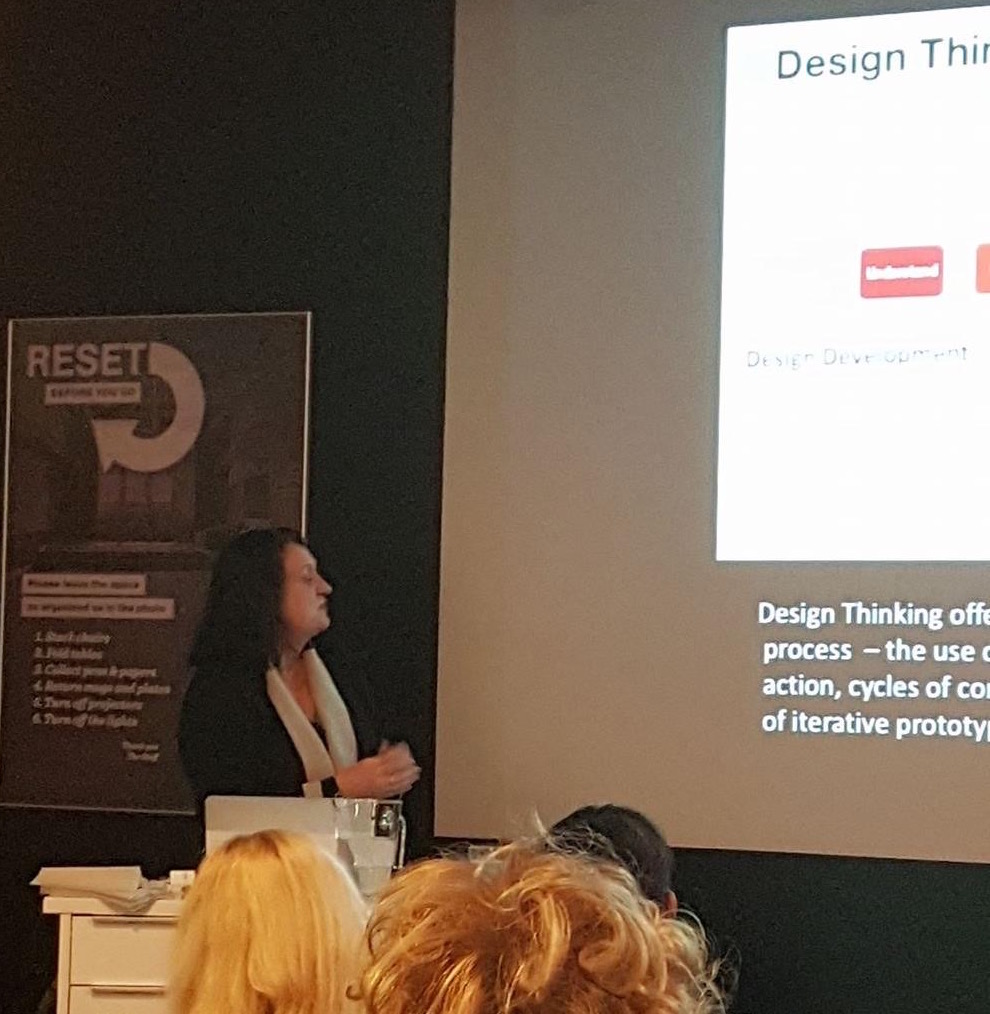
Image Conference presentation at Aalto University
As part of my research, I was lucky enough to spend a day in Stockholm documenting the costume fitting process ofNIDA Design graduate Dan Potra (1991) at the Royal Swedish Opera. He was there designing both a new production ofDracula and remounting a production ofCinderella, which he first worked on in Brisbane.
Conducting observational research provided a great opportunity for me to hone my teaching practice for when I returned to theNIDA graduate school, where we regularly talk about research methodologies and their application in the performing arts.
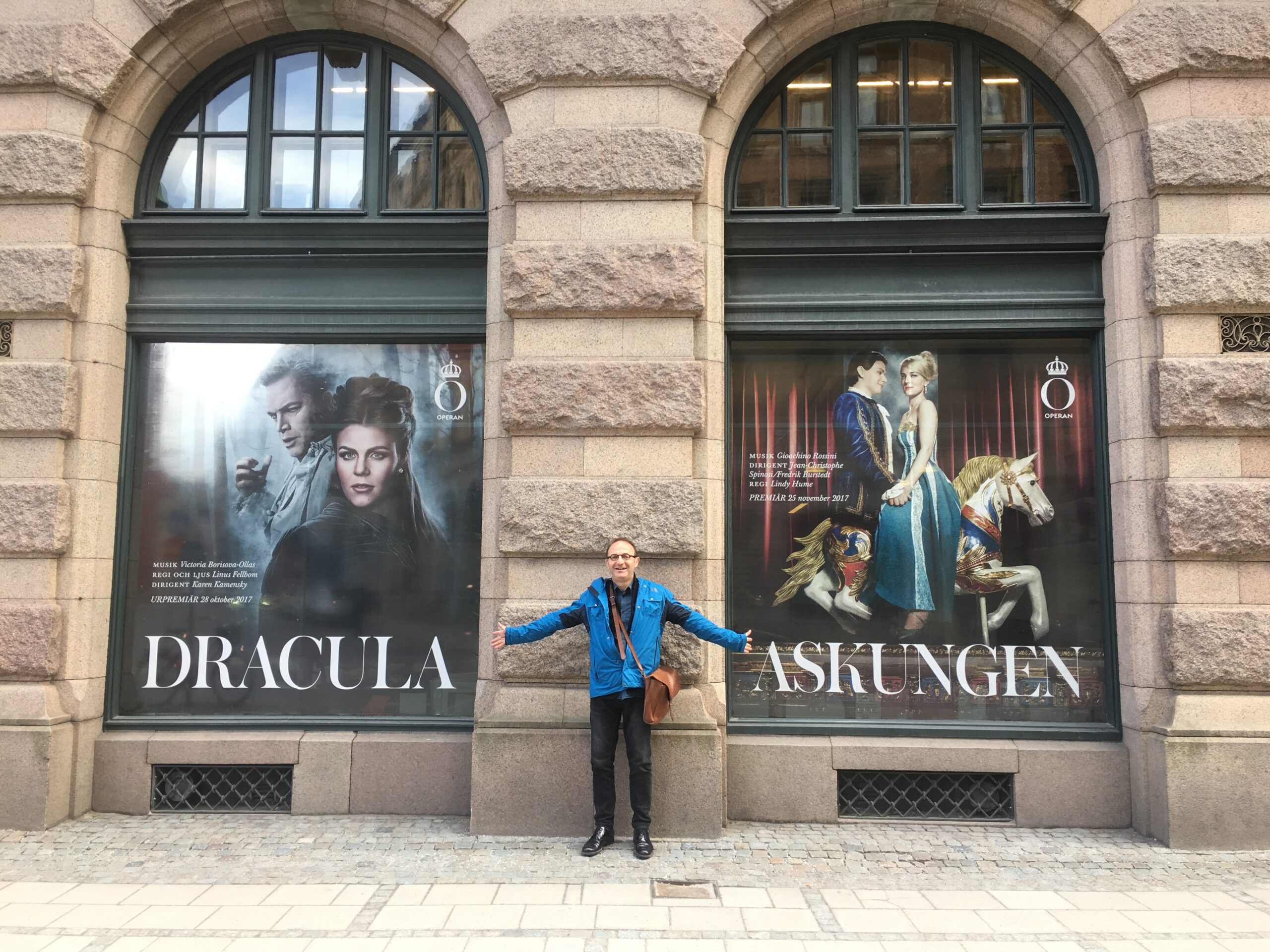
Image NIDA design graduate Dan Potra outside the Royal Swedish Opera
During the two months, I took part in several seminars in which I and other costume scholars shared ideas and gave feedback to each other. It was wonderful to have been able to share ideas and develop relationships with scholars from around the world, including from Russia, Finland, Britain, Australia, Greece and Sweden.
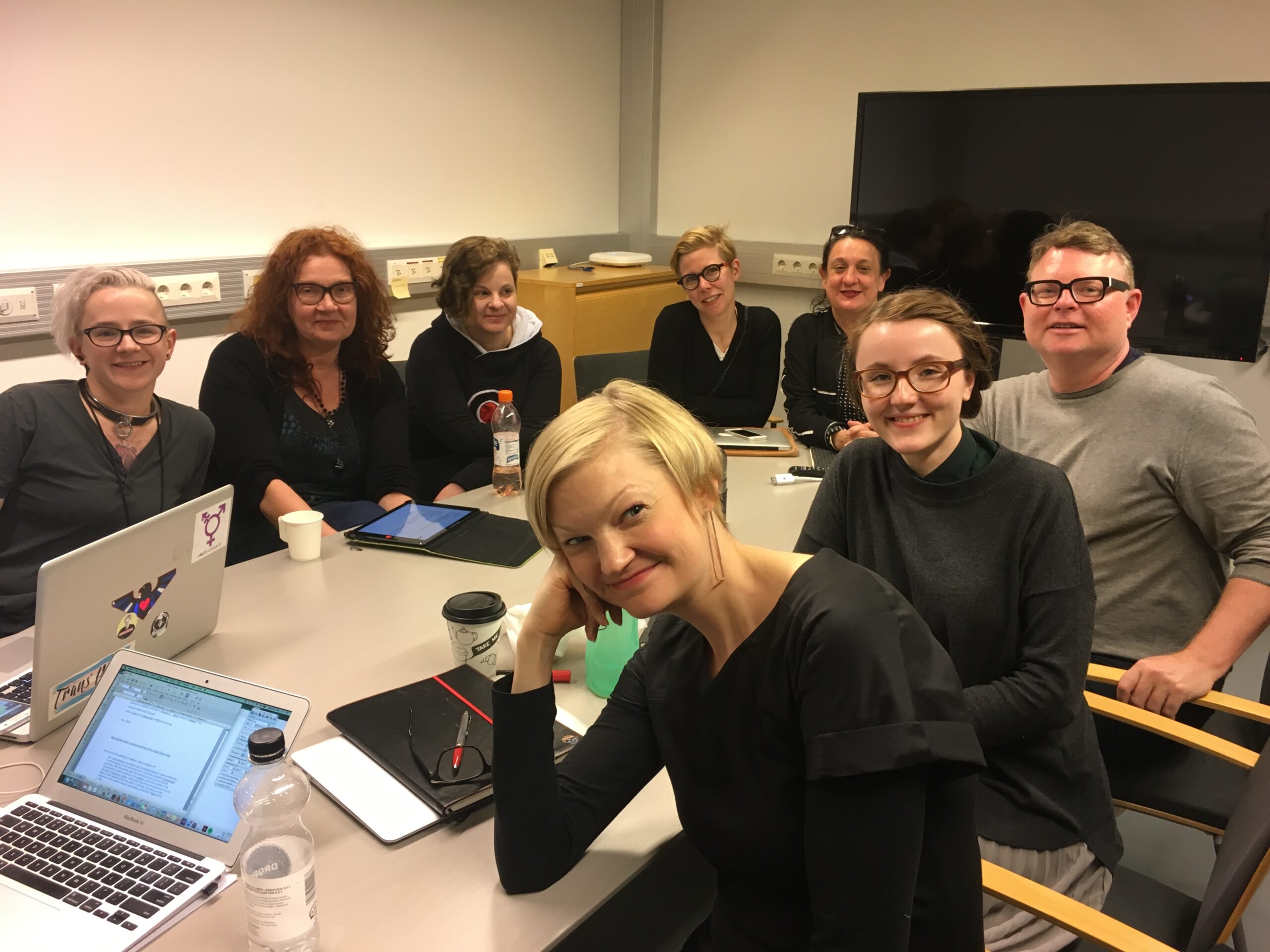
Image Costume in Finland Research Group
As a result of my time in Finland, I have developed a research plan which will include additional journal articles and conference presentations over the next few years. I’m also looking forward to organising and hosting a one-day research seminar in November, which will bring together scholars from all over Australia, who are researching costume design, to discuss their work. I think NIDA is the perfect site for these types of discussions as it’s one of the few performing arts institutions in the world that brings together both practice and theory in a dynamic interrelationship.
As well as focusing on my research, I was able to take in lots of exhibitions. Finland has a rich and very influential design history, which is reflected in the design of the city as well as its services and experiences. A highlight was a fabulous exhibition at Helsinki Art Museum about the development of Modernism in Finland, including many iconic objects designed in Finland notably Marimekko and Alvaar Aalto. The exhibition showed how many of these now iconic designer objects were part of a broader national project of economic recovery and social engineering that occurred in Finland as a result of it gaining independence from the Russian Republic in 1917.
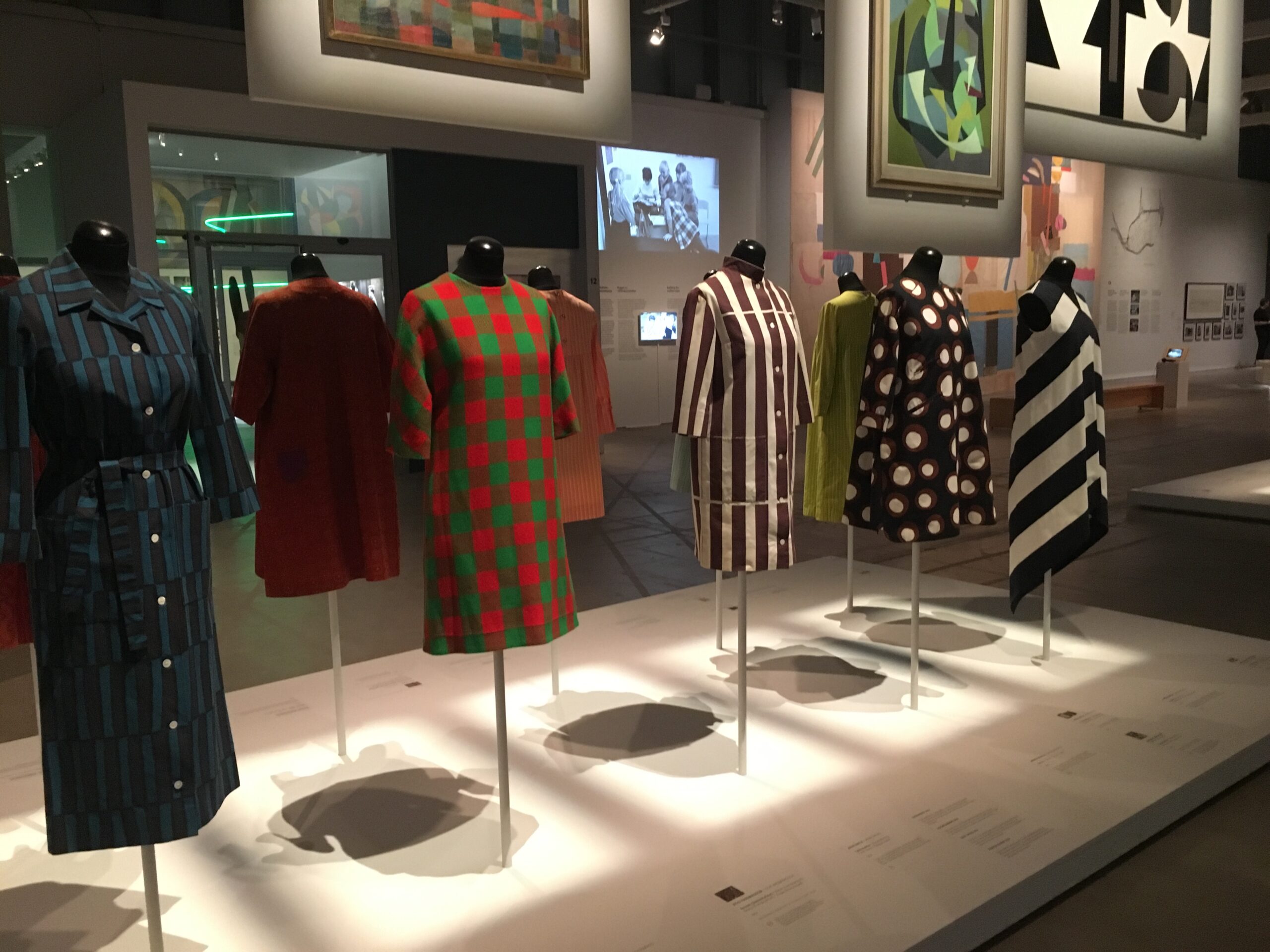
Image The Modern Life exhibition at Helsinki Art Museum
Another interesting factor, which I had read about previously, was the ways in which the natural environment influenced the look of modernism. Every Finn I spoke to was passionate about their relationship to nature and the need to be close to lakes, forests and snow. Having only seen snow a handful of times in my life, it was a thrill to visit the Arctic Circle at Easter. Seeing the seasons change around me in such a dramatic way was also fascinating. In May the whole environment sprang into spring.
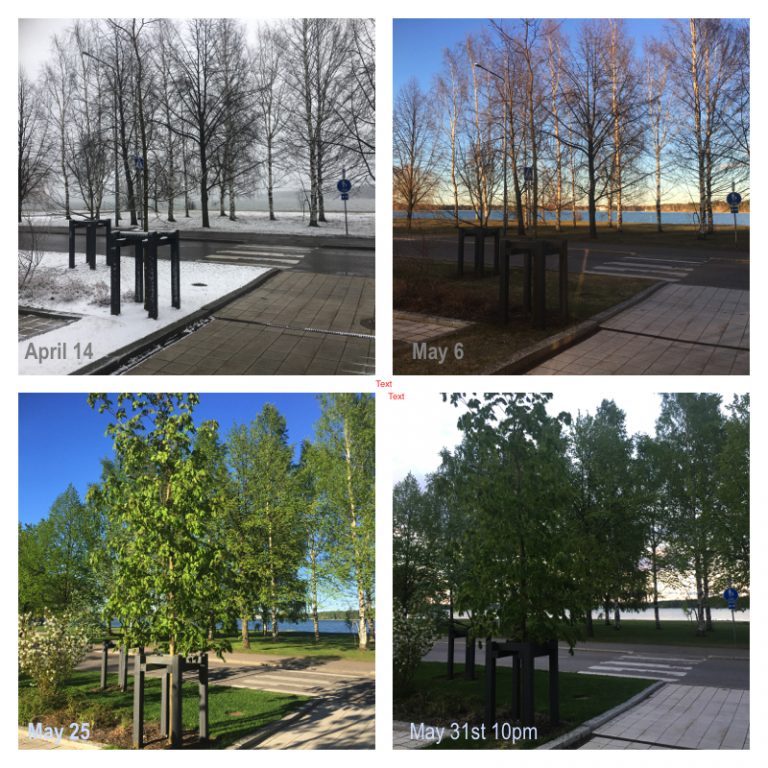
Image I took a photo outside my apartment each week
I returned from my sabbatical with an international perspective on recent research and scholarship in the area of costume design and production, as well as a refreshed approach to teaching research processes, and an enormous amount of information to share with the MFA, Design and Costume students in particular.
Parhaat onnittelut!
About the author:Dr Suzanne Osmond is NIDA’s Graduate Course Convenor and Lecturer, Practice-based Research and Contextualising Practice subjects. She is an academic and practicing theatre professional who has been involved in diverse projects in theatre, live events and film as a costume supervisor, coordinator and production manager.

